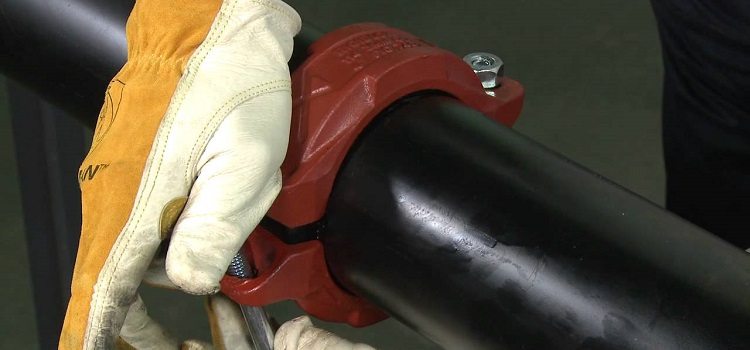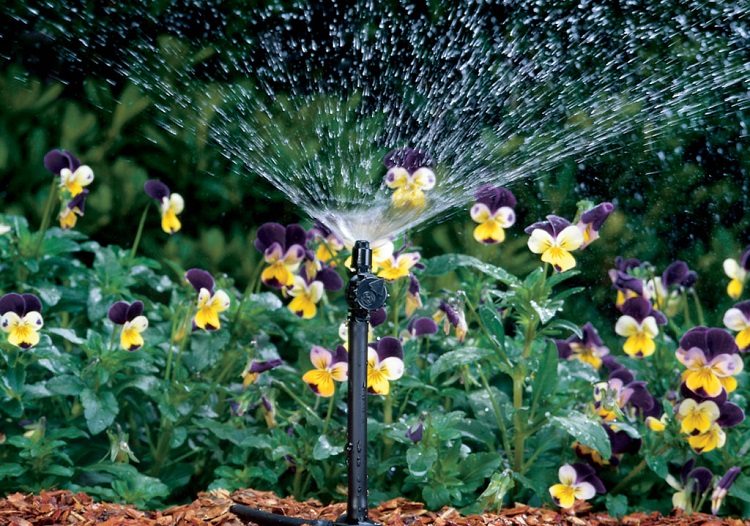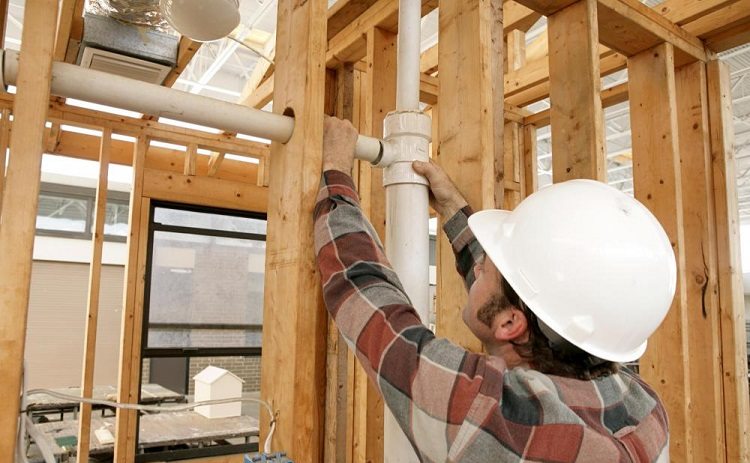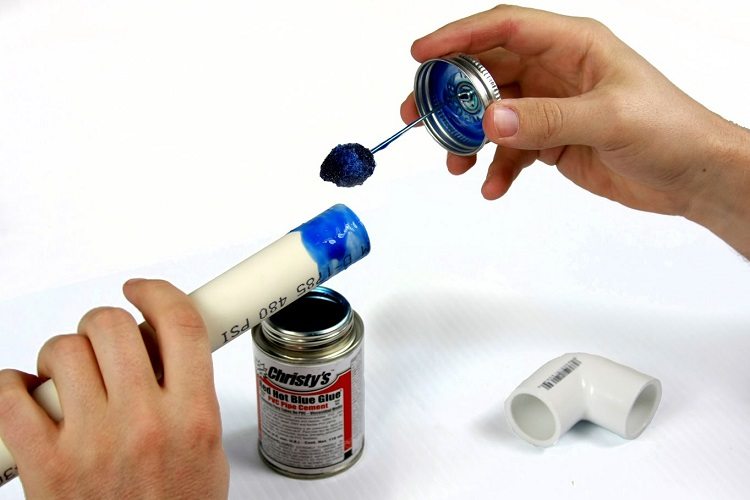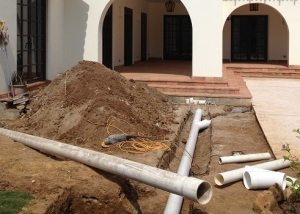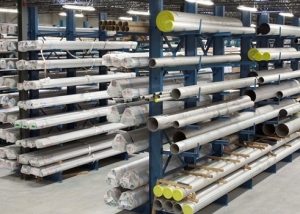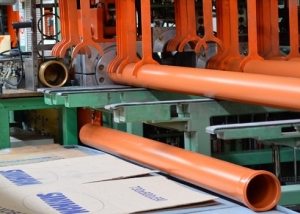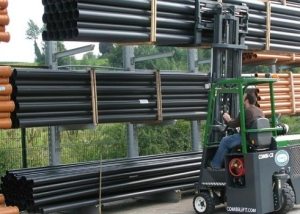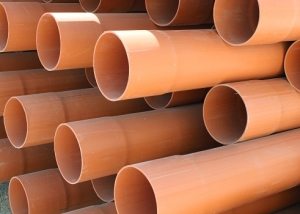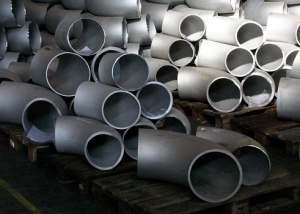The advent of plastic pipes has become a real breakthrough in the field of plumbing communications. They are able to run smoothly for at least 50 years! The combination of such properties as a low level of heat loss, low weight and affordable price led to the widespread distribution of polymer pipes in the national economy.
Content
Scope of plastic pipes and types of connections
Polypropylene, polyethylene and metal-plastic are used as raw materials for the manufacture of these products. But the largest niche in this segment of the construction market was won by pipes made of polyvinyl chloride (PVC). They are successfully used not only for the organization of cold water supply systems, but also for sewage. In addition, in the industry, PVC pipes are used to transport various chemically active liquids with a temperature of 0-45 ° C containing aggressive substances.
Today, there are the following ways to connect PVC pipes:
- gluing with special glue. This method also has another name - "cold welding";
- use of flange connections;
- connection to the bell;
- use of a sleeve for PVC pipes.
Advice! In the absence of special equipment and professional skills, it is more appropriate to use simpler installation methods. After completing work, be sure to check the connection for leaks.
These products are very popular among owners of country cottages and summer residents. Creating PVC-based water pipes or arranging a pond on a personal plot is not fraught with numerous troubles and excessive cash costs. This is due to the ease of installation of such elements of water supply systems. These fittings are perfectly connected to metal pipelines.
Types of PVC pipe connectors
Modern industry produces a wide range PVC pipe fittingswith which you can give the pipeline any configuration. If we talk only about couplings, then they are of the following types:
- direct coupling. It is designed to connect pipes of the same diameter;
- transition. With the help of such a detail, pipes with different diameters are connected;
- couplings designed for solder connections or carving pipes made from various materials. The marking МРН means the presence of an external thread, and МРВ internal. There are modifications of couplings that allow you to switch from smooth to corrugated pipes;
- contours. The use of these fittings facilitates the arrangement of pipelines in places where they intersect or when building structures interfere with their direct laying;
- plugs with cork or thread. Installing such a sleeve for a PVC pipe allows access to the system when clogging occurs;
- supports. These parts are used to firmly fix the trunk. Their use is relevant in systems whose operating environment is characterized by high temperature. Supports neutralize the effects caused by thermal deformation of PVC pipes.
Shut-off and control valves for the PVC pipe are divided into two large groups: manual valves and thermostatic valves. Valves can be made from PVC and soldered directly into the system itself. If their case is made of metal, these parts are equipped with threaded elements.
The route is branched using tees for PVC pipes or crosspieces. The former can act simultaneously as adapters for products with other diameters. Self remodel fitting prefabrication is not allowed, as this threatens to depressurize the pipeline during operation. Combined modifications can also be found on the market, providing the ability to switch from welded to threaded joints and vice versa.
The dimensions of the PVC coupler are shown in the table below.
Table 1
| The length of the side of the housing parts, mm | Case wall thickness, mm | Landing diameter mm |
| 462 | 9,8 | 500 |
| 325 | 8,8 | 400 |
| 297 | 6,9 | 315 |
| 254 | 5,5 | 250 |
| 217 | 4,4 | 200 |
| 154 | 3,6 | 160 |
| 122 | 2,9 | 110 |
With the right approach, using such a product provides a reliable connection of pipes on long sections of the highway.
Installation of connecting elements
Installing a sleeve for a PVC pipe involves the following sequence of actions:
- Cutting the repaired section of the pipeline. This operation must be performed so that the distance between the edges of the pipes does not exceed 50 mm.
- Determination of the spatial location of the coupling in relation to the connected pipes. To do this, align their edges with the ends of this connecting element so as to achieve alignment of the components. After doing this, apply mounting tags to all parts.
- Lubricate the rubber rings in the coupler and pipe ends with silicone grease.
- Apply glue to the inside of the coupling and pipe.
- Next, push the sleeve onto the pipe completely.
Perform the same operations with another pipe and combine the previously marked marks on the coupler and pipes.
Hold the parts firmly for at least 15 seconds until the glue begins to dry. And generally avoid moving them for at least 15 minutes after gluing. It is recommended to fill the pipeline with water and check for leaks no earlier than 24 hours after this procedure.
Advice! To maximize the coincidence of the axes, smooth the edges of the pipes to be joined together: there should be no sharp edges or burrs on them. Among other things, this way you protect the rubber o-rings from damage.
Tees for connecting PVC pipes. Varieties
Today, in the construction of private houses for the arrangement of the sewage system, polyvinyl chloride pipe elements are usually used. The nodes of the T-conjugation of its branches can be performed using tees. The assortment of these products is divided into 2 large groups.
Plastic tees. These include collet and welded fittings, the details of which are made of PVC. In addition, a separate category is made of tees that are mounted on a socket connection or on glue.
Composite fittings for branching the pipeline. In this group, experts include tees that are equipped with bronze or steel bushings. With the help of such parts, you can connect PVC pipelines with metal. Therefore, their design is designed for crimping (from the side of the polymer end) or threaded installation (from the side of the sleeve). Using a composite tee for a PVC pipe allows you to embed instrumentation (pressure gauges, etc.) into the system.
Basic rules for mounting tees
For such connecting fittings to last for many years, you must adhere to the following recommendations:
- use rectangular tees exclusively in pressure systems. Non-pressure networks should be equipped with bends at 45 degrees;
- when installing a pressure-free line on the sockets, the tee must be installed with a socket in the direction of the direction of fluid movement.
- When mounting this fitting on glue, try to position the pipe relative to the connecting element as quickly as possible, literally within a few seconds after installing the end of the pipeline into the tee.
Compliance with these rules will avoid frequent blockages and the need to deal with them.
Advice! To avoid leaks, use sealing materials.
The use of these convenient and simple devices will allow you to create an extensive network of sewers without the presence of sophisticated equipment and any special tools. And the task of equipping a private house with a drainage system will be solved as soon as possible.
